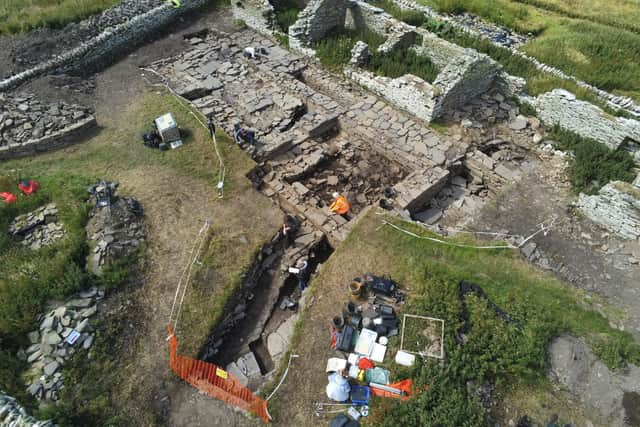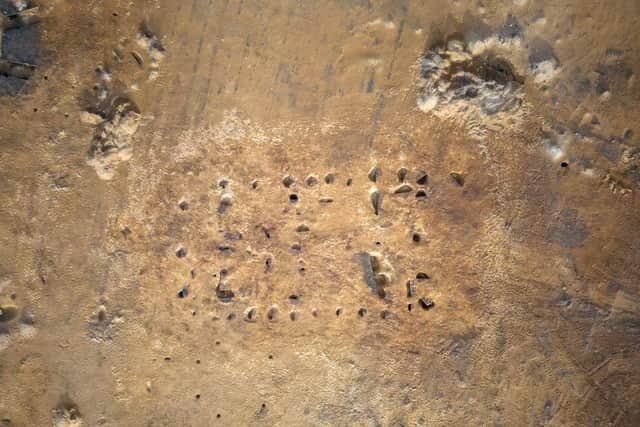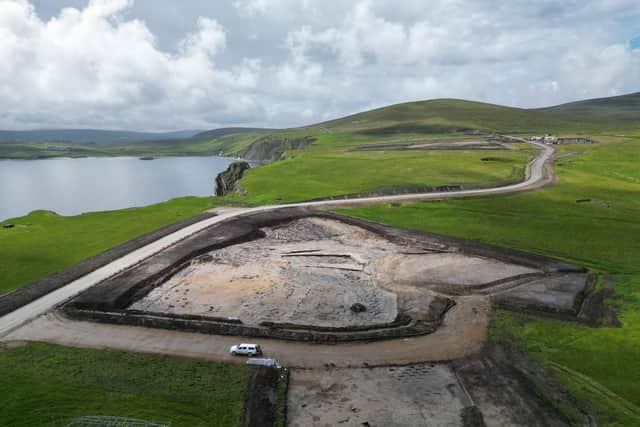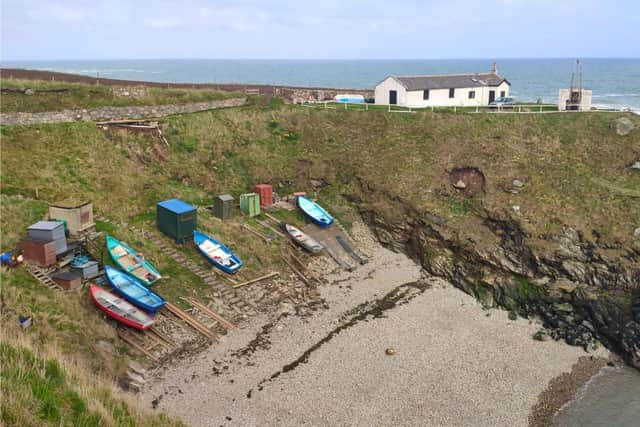Five of Scotland's best archaeological discoveries of 2023 which span thousands of years of human life
A site which links the Bronze Age to the space age in Shetland has been named amongst Scotland’s best archaeological finds of the year.
The ritual cremation cemetery, which is likely to date between 2200 to 1800 BC, was discovered during groundworks for the planned SaxaVord rocket launch site on the Lamba Ness peninsula in Unst in June.
Advertisement
Hide AdAdvertisement
Hide AdQuartz pebbles arranged into a bright white platform were discovered with this type of stone associated with prehistoric funerary practices with some believing they were laid to catch the light and perhaps give energy to the passage to the next world. Deposits of burnt bone were also discovered, along with a series of pits and boulders.


Dr Val Turner, Shetland’s regional archaeologist, said: “The Bronze Age is perhaps the period of Shetland’s past which we know least about and this is a wonderful opportunity to change that.”
The finds at Lamba Ness, which won’t hamper development of the space port, have been named among the top five ‘most amazing’ archaeological discoveries in Scotland during 2023 by DigIt!, a hub for Scottish archaeology coordinated by the Society of Antiquaries of Scotland
The list spans finds which tell stories of thousands of years of human activity – from the Neolithic period to 19th Century fishing industry – and add further detail to the country’s astounding archaeological record.


Dr Jeff Sanders, project manager at Dig It!, described 2023 as “another incredible year of discovery” which had underscored archaeology’s relevance to contemporary issues.
In Moray, a possible early Neolithic timber ‘hall’ also made the list. The structure may have been used by people up to 6,000 years ago with the timeline of the period spanning 4,100BC to 3,400BC. Archaeologists worked on the site at Portgordon as part of the planning proess and found a series of postholes and pits which would have been used to hold the timbers of the building.
More than 240 pieces of prehistoric pottery have also been recovered from the site, including fragments of Carinated and Unstan Bowl – among the earliest type of pots found in Britain. Unstan ware originates in the north-east mainland but named after Unstan chambered tomb in Orkney. Similar ceramics were found at the Neolithic timber hall at Balbridie, Aberdeenshire.


Yvonne Robertson from AOC Archaeology, who led on the finds at Portgordon, said: “Whether or not the structure meets the criteria of a timber ‘hall’ or is actually a more everyday ‘house’, it’s a very special contribution to our understanding of Neolithic sites.”
Advertisement
Hide AdAdvertisement
Hide AdMeanwhile, at Keir Hill of Dasher in Stirlingshire, an “elite” Iron Age hillfort which may have been built and occupied by local tribes before, during and after the Roman invasions of Scotland has been hailed as another top discovery of the year.
With the help of volunteers, Rampart Scotland and Kippen Heritage have uncovered distinct phases of fortifications at the previously undated site over the last three years, including defensive ditches.
A paved surface over the ditch into the entrance, similar to a causeway was excavated this spring. From radiocarbon dating of charcoal found in this surface layer, the period of the hillfort dates to the Late Iron Age (AD 1 to 400).


Dr Murray Cook of Rampart Scotland: “This elite structure would’ve been used by the locals to express identity and power to each other and the Romans. Interestingly, it’s also one of a handful of Iron Age sites in this area that was still in use by the late 2nd and 3rd centuries. It’s hoped that the hillfort will therefore reveal more about this enigmatic period of Scottish history.”
In Orkney, evidence of trading between the Northern Isles and medieval merchants from the 15th Century Hans Towns, in present day Germany, was discovered after pottery specialists from eight different countries examined items in Orkney and Shetland museum collections and artefacts unearthed by the University of the Highlands and Islands (UHI) Archaeology Institut
Sherds found in a late medieval building at Skaill farmstead in Rousay made the link between the small Orkney island and European networks as part of the research by LIFTE, an Arts and Humanities Research Council and German Research Foundation-funded project by the UHI, the German Maritime Museum and the University of Tübingen.
Finally, the ingenious ways of North East fisherman were revealed following analysis of rare cliffside cableways used to lift nets, gear, and fish from coves to the top of steep cliffs at Burnbanks Haven and Portlethen.
Introduced into quarries in the 19th century, the technology was borrowed by fishermen when natural coves were developed into small salmon harbours. According to a local resident, they were known as ‘Blondins’, named after the 19th-century French tightrope walker Charles Blondin who famously crossed the Niagara Gorge on a high wire.
Advertisement
Hide AdAdvertisement
Hide AdSarah Boyd, SCAPE Project Officer said: “Although the site was known, the 2023 surveys have shed light and dug a little deeper into their history, with the help of local communities.”
Dr Susan O’Connor, head of grants at Historic Environment Scotland, said: “This list is a great illustration of the archaeological discoveries made in Scotland this year alone. These projects highlight the variety and breadth of activity happening across the country, increasing our understanding of how the people, activities, and changes in the natural world over the centuries have shaped our environment today.”
Comments
Want to join the conversation? Please or to comment on this article.
